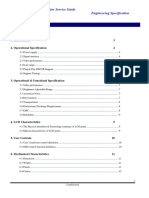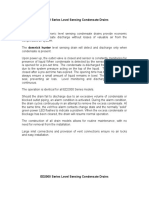0% found this document useful (0 votes)
72 views5 pagesWO Lecture 5
The document discusses damped oscillation, where dissipative forces cause the mechanical energy of a vibrating system to deplete over time. It presents the differential equation of motion for a damped harmonic oscillator containing damping and spring constants. The equation has exponential solutions describing damped oscillations that decay over time. Depending on the relationship between the damping and angular frequency constants, the oscillations will be overdamped, critically damped, or underdamped.
Uploaded by
RaadCopyright
© © All Rights Reserved
We take content rights seriously. If you suspect this is your content, claim it here.
Available Formats
Download as PDF, TXT or read online on Scribd
0% found this document useful (0 votes)
72 views5 pagesWO Lecture 5
The document discusses damped oscillation, where dissipative forces cause the mechanical energy of a vibrating system to deplete over time. It presents the differential equation of motion for a damped harmonic oscillator containing damping and spring constants. The equation has exponential solutions describing damped oscillations that decay over time. Depending on the relationship between the damping and angular frequency constants, the oscillations will be overdamped, critically damped, or underdamped.
Uploaded by
RaadCopyright
© © All Rights Reserved
We take content rights seriously. If you suspect this is your content, claim it here.
Available Formats
Download as PDF, TXT or read online on Scribd
/ 5





































